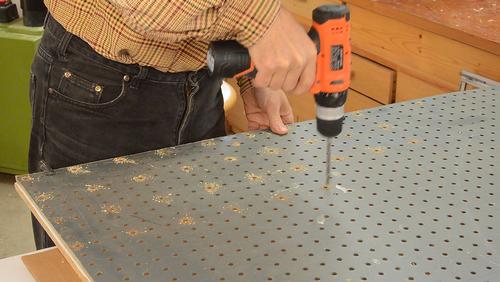 I previously combined a mouse trap and maze for some experiments,
but that maze was too easy and the mice learned it too fast.
I previously combined a mouse trap and maze for some experiments,
but that maze was too easy and the mice learned it too fast.
 I previously combined a mouse trap and maze for some experiments,
but that maze was too easy and the mice learned it too fast.
I previously combined a mouse trap and maze for some experiments,
but that maze was too easy and the mice learned it too fast.
So I set out to build a bigger maze with a grid twice the size. I used some pegboard to space out the grid of holes that the configurable walls plug into.
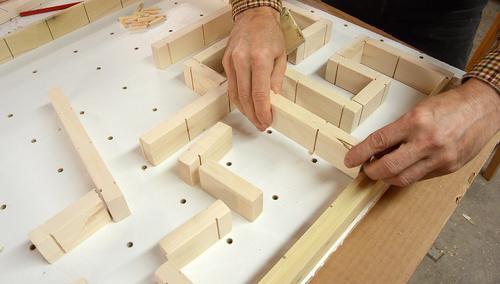
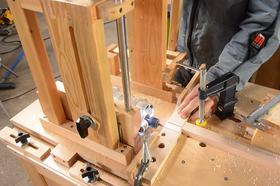 The wall segments all have pegs sticking out the bottom which plug into
the holes. I drilled the holes in the walls with my
slot mortising machine and a 1/4" spiral router bit.
The wall segments all have pegs sticking out the bottom which plug into
the holes. I drilled the holes in the walls with my
slot mortising machine and a 1/4" spiral router bit.
The pieces also have slots along the sides, and a slightly protruding lip on one end for the corners to connect.
 An old storm window fits on top to prevent the mice from jumping over the walls.
An old storm window fits on top to prevent the mice from jumping over the walls.
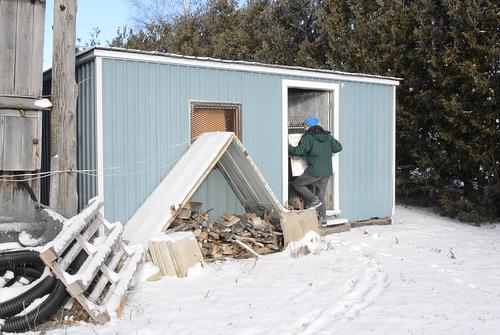
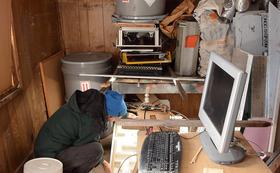 I then put the maze in an old shed, where I don't mind the presence of mice as
much. In the house and in the shop, I set mouse traps to get rid of them.
I then put the maze in an old shed, where I don't mind the presence of mice as
much. In the house and in the shop, I set mouse traps to get rid of them.
This shed is also the location for my previous three mouse videos (mouse trap, trap and maze and mouse hole experiments), plus where I filmed my wasp sucking machine xl.
It's amazing how many have commented about having so many mice in my house. Do they really live in such shacks that they would mistake this for a house?
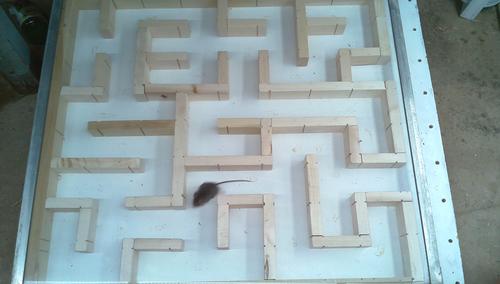 A mouse visitor. I had peanut butter in the maze, but by this time it was all eaten
up. It was amazing how fast the mice learned the maze. I suspect faster than
most people would learn such a maze (it's much harder from inside the maze).
A mouse visitor. I had peanut butter in the maze, but by this time it was all eaten
up. It was amazing how fast the mice learned the maze. I suspect faster than
most people would learn such a maze (it's much harder from inside the maze).
I guess it shouldn't be a surprise considering how good mice are at traversing all kinds of hidden passageways in houses, or passages under the snow in winter. Their whole environment is very maze-like.
 I also had a shrew visiting. This is a bit later. I put some sunflower seed in
parts of the maze, which the mice and the shrew hauled away a few kernels at
a time to stash somewhere else. As the mice and shrew went back and forth
they always headed to the kernels straight without any detours.
I also had a shrew visiting. This is a bit later. I put some sunflower seed in
parts of the maze, which the mice and the shrew hauled away a few kernels at
a time to stash somewhere else. As the mice and shrew went back and forth
they always headed to the kernels straight without any detours.
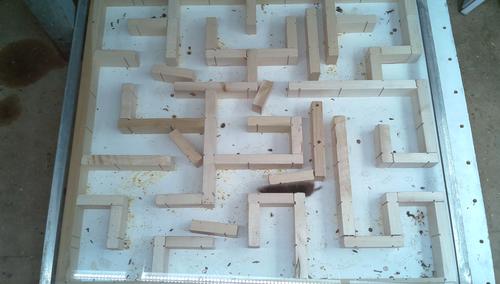 With the mice and shrew so competent at this maze, it really wasn't that interesting.
I had the idea of making a maze where some walls needed to be pushed aside,
which would then maybe close other paths. To test the idea, I put a few
blocks of wood in the maze. The shrew was quite adept at pushing these
aside to traverse the maze. But the mice were not into pushing walls aside.
I'm guessing mice are just inherently cautious, which is how they manage
to get bait out of traps sometimes without setting them off.
With the mice and shrew so competent at this maze, it really wasn't that interesting.
I had the idea of making a maze where some walls needed to be pushed aside,
which would then maybe close other paths. To test the idea, I put a few
blocks of wood in the maze. The shrew was quite adept at pushing these
aside to traverse the maze. But the mice were not into pushing walls aside.
I'm guessing mice are just inherently cautious, which is how they manage
to get bait out of traps sometimes without setting them off.
But what was interesting is that the mice and shrew had no problem getting through gaps MUCH smaller than the passageways in the maze. With the vermin only opening up small gaps to go through, I figured they wouldn't move walls enough to make a maze effectively self-modify. But it did give me the idea of making a much more complicated and detailed maze.
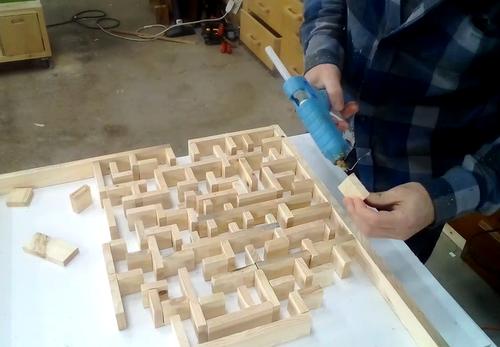 Ironically, I made the previous maze reconfigurable so I wouldn't have to re-built
it if I wanted to change it, but the thing that I needed to change was the
grid size, and that would have required rebuilding the whole maze.
Software developers will be quite familiar with this conundrum!
Ironically, I made the previous maze reconfigurable so I wouldn't have to re-built
it if I wanted to change it, but the thing that I needed to change was the
grid size, and that would have required rebuilding the whole maze.
Software developers will be quite familiar with this conundrum!
This time, I just hot glued little blocks on a bigger piece melamine coated particle board. I could still pry the glued pieces off the melamine, which allows for some reconfiguration.
I wasn't bound by any grid this time, so the maze was more haphazard.
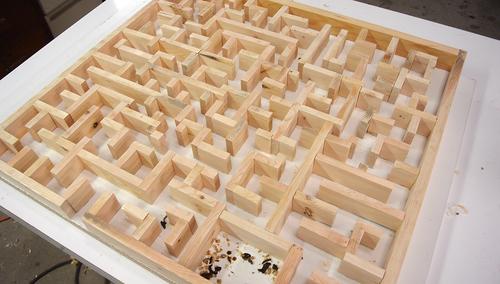 New maze, with a bigger room at the far end of the long path with sunflower seeds in it,
but I also spread some peanut butter throughout the maze to encourage the vermin
to explore.
New maze, with a bigger room at the far end of the long path with sunflower seeds in it,
but I also spread some peanut butter throughout the maze to encourage the vermin
to explore.
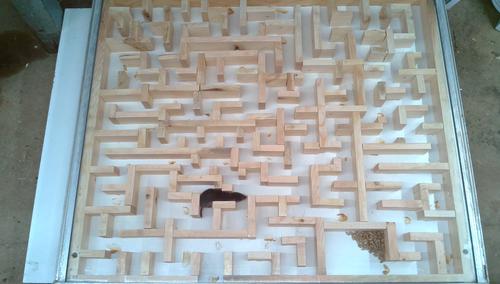 The shrew fully explored the maze right away, eating the peanut butter
and finding the sunflower seed at the far end.
The shrew fully explored the maze right away, eating the peanut butter
and finding the sunflower seed at the far end.
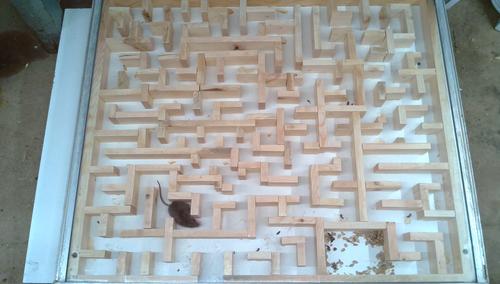 But the mice were much more timid, this is as far as any of the mice went
into this maze. What a disappointment.
It didn't help that the shrew already ate most of the peanut butter.
But the mice were much more timid, this is as far as any of the mice went
into this maze. What a disappointment.
It didn't help that the shrew already ate most of the peanut butter.
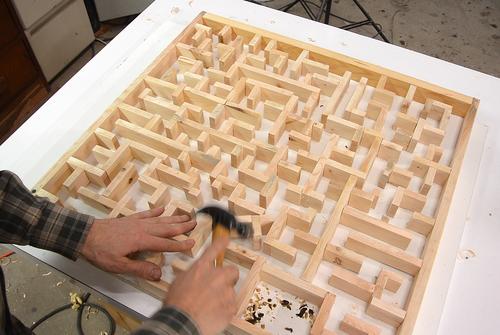 The mice seemed to favour moving to the right initially, so I reconfigured the maze
to have the proper path going off to the right. I figured maybe this would give
the mice some small advantage.
The mice seemed to favour moving to the right initially, so I reconfigured the maze
to have the proper path going off to the right. I figured maybe this would give
the mice some small advantage.
But the shrew was undeterred by this and quickly figured out the new path, while the mice didn't bother going very far into the maze.
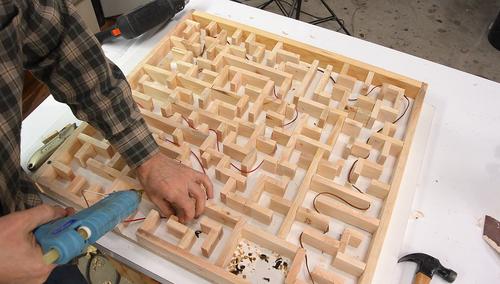 More reconfiguring, making the path through the maze a little longer,
and adding some tight spots to deter the shrew.
More reconfiguring, making the path through the maze a little longer,
and adding some tight spots to deter the shrew.
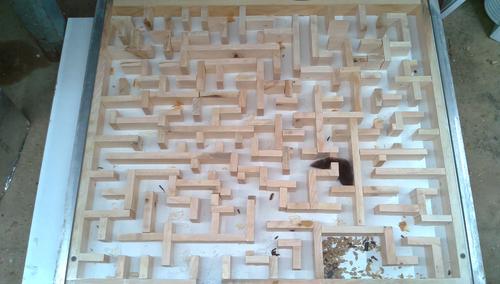 Here the shrew is going through a really tight spot. This one was supposed to be
just a teaser (it's a shortcut). But the shrew squeezed its way through it.
I was impressed!
Here the shrew is going through a really tight spot. This one was supposed to be
just a teaser (it's a shortcut). But the shrew squeezed its way through it.
I was impressed!
But I wanted to see how the mice would do in the maze.
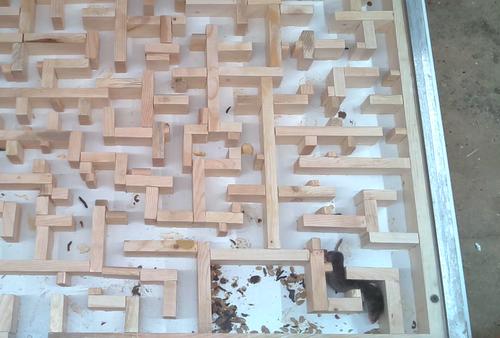 So I added way more tight spots. The final tight spot had the shrew stumped at first,
but it came back and tried again. Unbelievable, the determination and flexibility of
that shrew. The mice didn't bother trying very hard. So I guess it mostly ended up
being a shrew experiment.
So I added way more tight spots. The final tight spot had the shrew stumped at first,
but it came back and tried again. Unbelievable, the determination and flexibility of
that shrew. The mice didn't bother trying very hard. So I guess it mostly ended up
being a shrew experiment.
All this out of curiosity, and because these experiments make popular videos on YouTube. (My first mouse video is up to 14 million views and my mouse hole experiments received over 8 million views in the first two months.)
But I don't expect this video to do as well. It lacks a focus that my previous mouse videos had. I had the camera rolling for over a month capturing footage and modified the maze many times, so it makes for a rather long video, without a single funny focus.
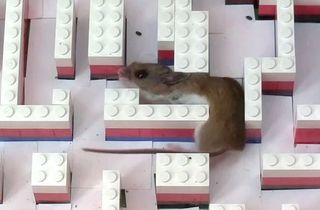 Mouse in a Lego maze (2019)
Mouse in a Lego maze (2019)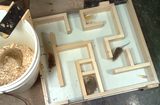 Mouse trap maze experiments (2016)
Mouse trap maze experiments (2016)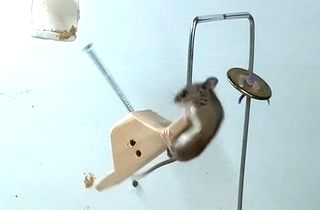 Jumping wild circus mouse (2020)
Jumping wild circus mouse (2020)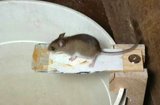 Building a better mouse trap (2015)
Building a better mouse trap (2015)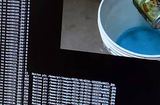 My imgcomp program (motion triggered time-lapses)
My imgcomp program (motion triggered time-lapses)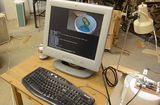 High tech mousetrap monitor fail (video only, 2015)
High tech mousetrap monitor fail (video only, 2015)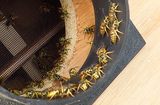 Wasp sucking
Wasp sucking